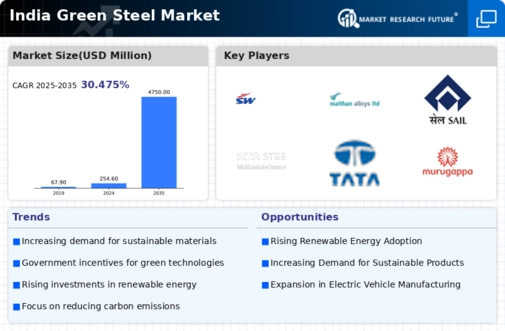India Green Steel Market Overview
The India Green Steel Market is rapidly evolving as environmental concerns and sustainability practices gain traction in the manufacturing sector. The competitive landscape of this market is characterized by a growing emphasis on innovations that reduce carbon emissions while enhancing the efficiency of steel production methods.
Key players are investing heavily in research and development to integrate eco-friendly technologies, aiming to minimize environmental impact while meeting the increasing demand for steel in the construction and automotive industries. As the Indian government promotes initiatives like the National Steel Policy, the competition among companies to establish themselves as leaders in green steel production is intensifying, creating a dynamic environment ripe for advancements and collaborations.
JSW Steel has strategically positioned itself by investing in eco-efficient processes that allow for the production of high-quality steel with a lower environmental footprint. Additionally, the company's extensive distribution network reinforces its market presence across the nation, allowing it to cater to various sectors including infrastructure, automotive, and construction.
JSW Steel's dedication to sustainability, combined with its robust operational capabilities, enhances its competitive edge in the evolving green steel landscape.
Maithan Alloys also holds a significant position within the India Green Steel Market, specializing in the production of high-quality ferroalloys essential for steelmaking. The company focuses on providing innovative products that align with the sustainability goals of the steel industry.
Maithan Alloys has established itself through its commitment to reducing environmental impact, supported by its manufacturing processes that prioritize energy efficiency and resource conservation. Its strategic ventures have led to noteworthy collaborations and partnerships aimed at enhancing product quality while minimizing carbon emissions.
In addition to its core offerings, which cater primarily to the needs of steel producers, the company has made efforts to expand its market reach within India, reinforcing its strengths in the ferroalloy segment. Through these initiatives, Maithan Alloys is well-positioned to contribute to and capitalize on the growth of the green steel sector in India.





















Leave a Comment